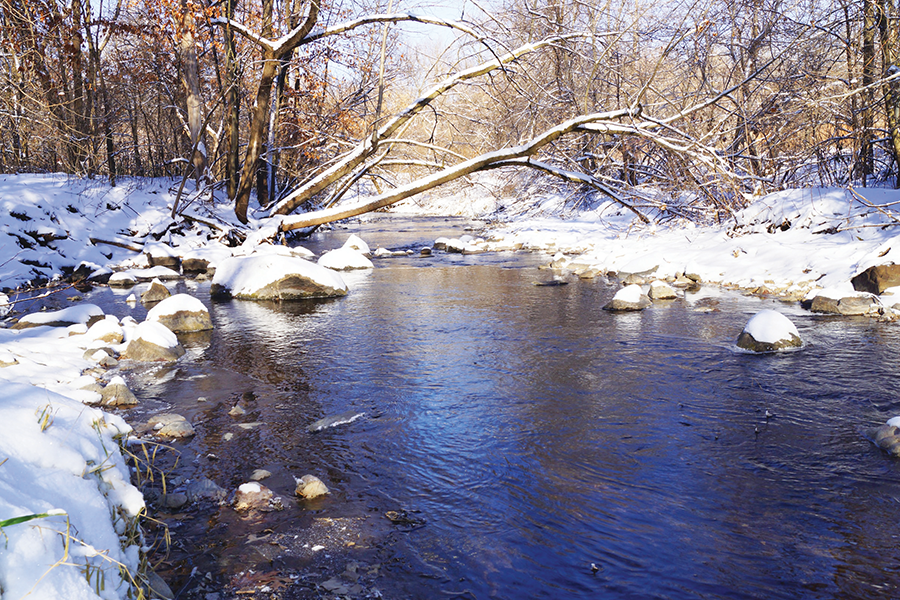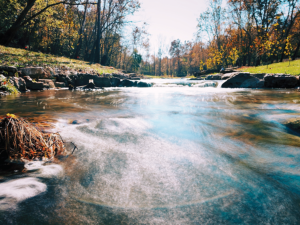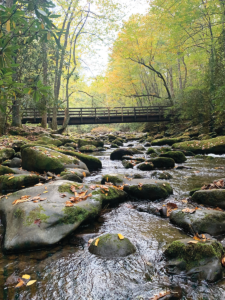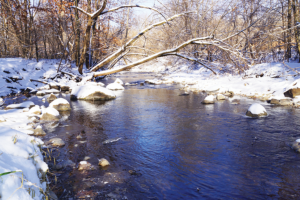
Troubled waters: Quest for WOTUS clarification continues
While the EPA and the U.S. Army Corps of Engineers issued a final rule responding to a verdict narrowing the definition of waters of the United States in September, some growers and ag industry insiders say that definition remains murky.
A May ruling by the U.S. Supreme Court limited the areas regulated under the 1972 Clean Water Act (CWA) to wetlands that are “as a practical matter indistinguishable from waters of the United States.” Waters of the United States (WOTUS) is a threshold term seeking to establish the geographic scope of federal jurisdiction over “navigable waters” defined in the CWA.
Decades of debate over which waters and their conveyances fall under
federal and state permitting authority have followed the original legislation.
In December 2022, the EPA and the U.S. Army Corps of Engineers tried to establish a definitive definition centered around whether a stream or wetland had a relatively permanent (continuously flowing with a connection to larger bodies of water) connection or a significant nexus (a connection that could run dry but be reestablished after heavy rainfall).

The May decision in Sackett vs. Environmental Protection Agency, widely viewed as a victory for farmers and private property holders, reversed and remanded a lower court decision requiring an Idaho couple to have a permit from the Army Corps of Engineers to build a house on a plot of land determined to contain a federally protected wetland.
On Sept. 8, EPA and the Corps of Engineers issued a final rule in response to that decision. The final rule revises January 2023 WOTUS regulatory text to remove all language pertaining to significant nexus, deletes interstate wetlands from the category of interstate waters and amends the definition of “adjacent” to mean “having a continuous surface connection.”
ONGOING DEBATE
The rule, though, has not provided resolution.
Twenty-six states have joined agricultural groups in filing amended complaints to the federal rule. A complaint filed in mid-November in the U.S. District Court for the District of North Dakota alleges that the EPA committed violations of the Administrative Procedure Act, including not providing a public comment period before releasing the amended final rule.
Two other states have filed a separate amended complaint in the U.S. District Court for the Southern District of Texas.
“What we continue to see is this battle taking place in the courts between agriculture, between the environmental groups, between various administrations, at defining what the waters of the U.S. really consists of,” Mike Wenkel, National Potato Council chief operating officer, told Spudman. “At the end of the day, it’s going to take Congress providing clarifying language to what they mean by the term ‘navigable waters’ to take this out of the courts and take it out of this round of ping pong going back and forth.”

On Nov. 14, U.S. Rep. Dan Newhouse (R-Washington) led 71 members of Congress in sending a letter to EPA Administrator Michael Regan and Assistant Secretary of the Army for Civil Works Michael Connor seeking clarification of the regulatory definition of WOTUS and expressing concern about lack of a public comment period on the final rule.
“Farmers, ranchers, and rural communities in Central Washington deserve certainty and safeguards from federal government regulations dictating how they use their land,” Newhouse wrote.
The complicated issue can affect basic functions for growers, Wenkel said.
“It’s their ability to use fertilizers, to use pesticides, adjacent to navigable waters or within limited areas,” Wenkel said. “So all of a sudden, you have this ephemeral stream that runs through the middle of your field, and you’re not allowed to apply fertilizer within so many feet of it, but it’s really just a low spot in the field. You’re now out of compliance with the Clean Water Act, in theory, depending on if that’s defined as a water of the U.S. or not.”
Ephemeral streams have flowing water only during, and for a short duration after, precipitation events in a typical year.
QUEST FOR CLARITY
The Sackett case involved a years-long dispute between Michael and Chantell Sackett and the EPA. The Sacketts’ construction of a house beside Idaho’s Priest Lake was halted in 2007 after the EPA determined the lot contained a federally protected wetland that was part of the Priest Lake watershed.
The court heard oral arguments last October, and while all nine justices ultimately sided with the Sacketts, several expressed concern over the narrowed definition of WOTUS.
“The Court’s new test will leave some long-regulated adjacent wetlands no longer covered by the Clean Water Act, with significant repercussions for water quality and flood control throughout the United States,” Justice Brett Kavanaugh wrote.

Conservation group The Wildlife Society estimated the decision removed federal protections from approximately 63% of U.S. wetlands by acreage and millions of miles of ephemeral streams.
“Healthy wetland ecosystems are critical to maintaining biodiversity, fisheries and ecosystem services,” an article on the organization’s website reads. “Wetlands offer natural protection against floods and improve water quality” and provide defenses against shoreline erosion.
The Wildlife Society characterized the Sackett decision and resulting final rule as “one of the most extreme rollbacks of federal protections for U.S. wetlands since the inception of the Clean Water Act.” But like groups hailing the decision, the organization called on Congress to codify federal wetland protections.
In addition to land use questions, eligibility for USDA programs and other longer-range considerations could be at stake, Wenkel said.
“The farmer is trying to become the biologist, the hydrologist, the any- other-scientific-term you can imagine trying to make the right decision on fertilizer or pesticide applications to be in compliance with the law,” Wenkel said. “It has potential carryover to farm programs. When you knock over a small hill, did you fill in a wetland?
“Common sense becomes a big part of what we need to be thinking about with it, (where) at the end of the day on the farm, you can walk out there and go, ‘OK, this falls within or this does not fall within the definition of navigable water.’ ”







